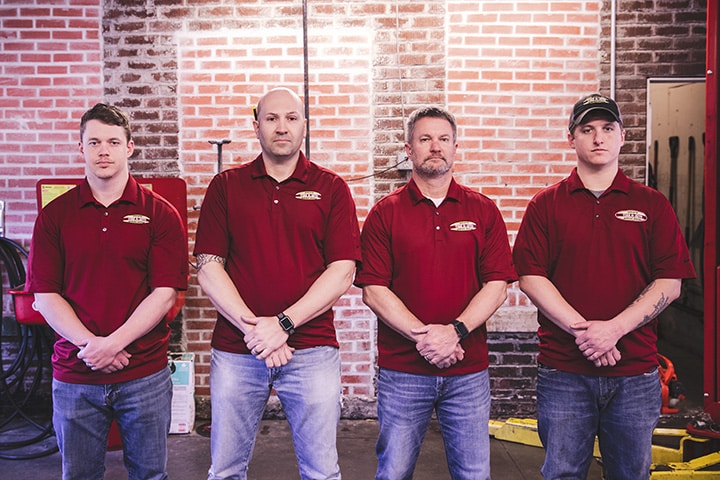Steve’s Tire And Auto In Memphis
There is a system within your car that you likely don’t think about until it needs repairs. That’s the cooling system. It works through a group of parts functioning properly together. Any one of these parts malfunctioning or not performing at their top performance can affect the rest of the system.
Your vehicle’s cooling system is made up of a cooling fan, water pump, thermostat, radiator, heater core, heater valve, and a few other small parts. These all work together to dispel the heat created within the engine and remove it. This is an especially important process for the heat inside the engine. If too much heat collects inside the engine it can overheat. The heat can build up in many different areas of the engine and when it finally reaches the top temperature it can operate under, the cooling process begins.
Once that peak operating temperature is reached, the thermostat within the engine opens to allow antifreeze to leave the engine and head to the radiator. This starts the circulatory flow which soaks up the extra heat. Additionally, the antifreeze keeps the rest of the fluids in the engine from reaching extreme temperatures. Whether it's a high temperature leading fluids to boil or a low temperature leading fluids to freeze, the antifreeze plays a major role in the overall temperature of your vehicle’s engine.
After the antifreeze has made its way through the engine, it continues on to the radiator. In the radiator the heat it’s controlling can escape through the walls of the radiator. Then, the antifreeze must return to a cooler temperature. This is done by the cooling fan. Once the antifreeze is cooled enough, it returns back to the engine to redirect more heat.
The radiator should also be checked during a cooling system service. Being the main way antifreeze is cooled and circulated through the system, a malfunctioning or damaged radiator can mean major engine failure. During a cooling system check or service, the radiator hose should be inspected for leaks or breaks. A radiator pressure test should be performed to be sure there is no damage within the radiator or radiator hose.
Another malfunction that can happen to your cooling system is with the cooling fan. The cooling fan circulates the air in and around your engine to disperse the heat. If this fan starts to malfunction, the engine can overheat. During any inspection of your cooling system, the mechanic or technician should check your cooling fan. They will be looking for any obvious damage, as well as checking the fan belt for cracks or tears and wear.
Eventually, after enough time running through the cycle of taking heat from the engine to the radiator and returning again, the antifreeze can begin to break down. This process of breaking down means your antifreeze must be drained and replaced occasionally. If it isn’t, the old antifreeze can cause corrosion in the vehicle’s machinery. And so, a service all car owners should be aware of is a cooling system flush and fill. During this service, the old antifreeze fluid will be drained from your radiator. The entire system will be flushed to avoid corrosion and new antifreeze will be put back in.
Manufacturer Recommendations
As with all systems of your car, being aware of the manufacturer recommendations regarding the maintenance schedule for your cooling system. Regular maintenance and service to your cooling system will help keep your engine in good working order for a much longer time.




